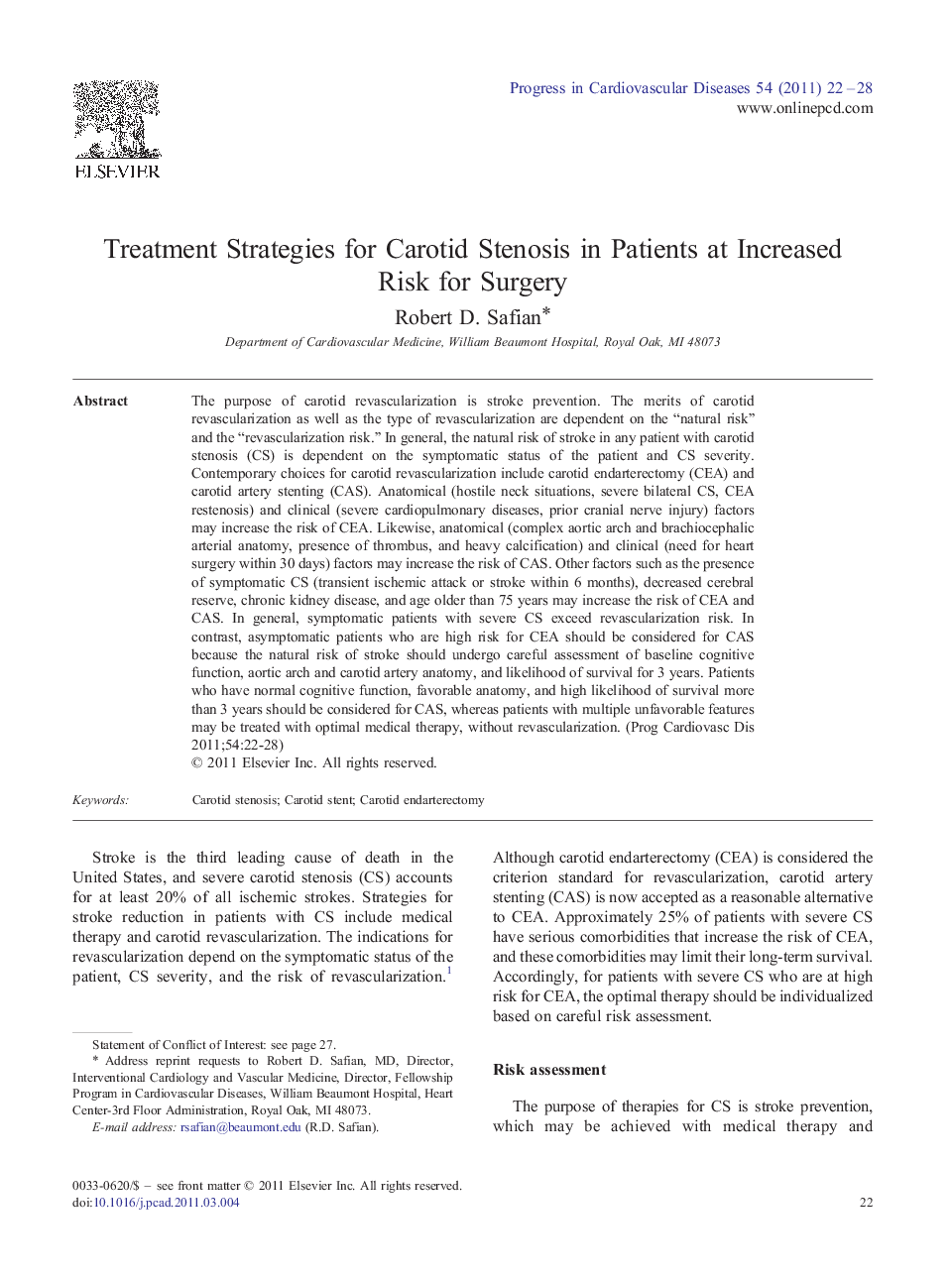| Article ID | Journal | Published Year | Pages | File Type |
|---|---|---|---|---|
| 3006738 | Progress in Cardiovascular Diseases | 2011 | 7 Pages |
The purpose of carotid revascularization is stroke prevention. The merits of carotid revascularization as well as the type of revascularization are dependent on the “natural risk” and the “revascularization risk.” In general, the natural risk of stroke in any patient with carotid stenosis (CS) is dependent on the symptomatic status of the patient and CS severity. Contemporary choices for carotid revascularization include carotid endarterectomy (CEA) and carotid artery stenting (CAS). Anatomical (hostile neck situations, severe bilateral CS, CEA restenosis) and clinical (severe cardiopulmonary diseases, prior cranial nerve injury) factors may increase the risk of CEA. Likewise, anatomical (complex aortic arch and brachiocephalic arterial anatomy, presence of thrombus, and heavy calcification) and clinical (need for heart surgery within 30 days) factors may increase the risk of CAS. Other factors such as the presence of symptomatic CS (transient ischemic attack or stroke within 6 months), decreased cerebral reserve, chronic kidney disease, and age older than 75 years may increase the risk of CEA and CAS. In general, symptomatic patients with severe CS exceed revascularization risk. In contrast, asymptomatic patients who are high risk for CEA should be considered for CAS because the natural risk of stroke should undergo careful assessment of baseline cognitive function, aortic arch and carotid artery anatomy, and likelihood of survival for 3 years. Patients who have normal cognitive function, favorable anatomy, and high likelihood of survival more than 3 years should be considered for CAS, whereas patients with multiple unfavorable features may be treated with optimal medical therapy, without revascularization.
